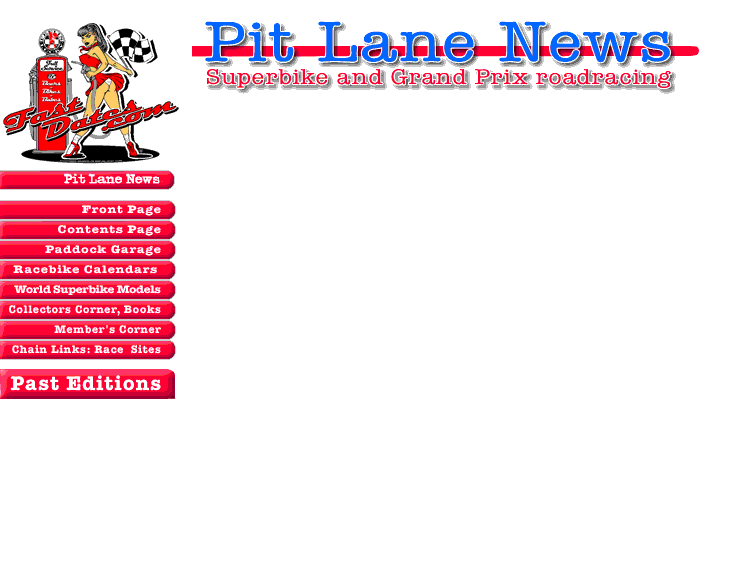
Above: Valentino Rossi and the 2004 MotoGP Yamaha YZR-M1
Yamaha YZR-M1
2004
MotoGP machine
Click on any image for a large 17 inch wide / 1224 Screensaver
3/2004
-After a respectable debut for the YZR-M1 in the inaugural MotoGP World
Championship during which Yamaha finished second overall with two race
wins, 2003 would prove to be less accommodating. After only one podium
result the M1's highest overall placing last season was seventh. As
a result Yamaha reviewed the situation with the intention of implementing
any improvements during the 2004 pre-season. Under the guidance of 52-year-old
Masao Furusawa - General Manager of Yamaha's Technology Development
Division - a man with a reputation for solving the most difficult issues,
Yamaha has come back with a fresh perspective.
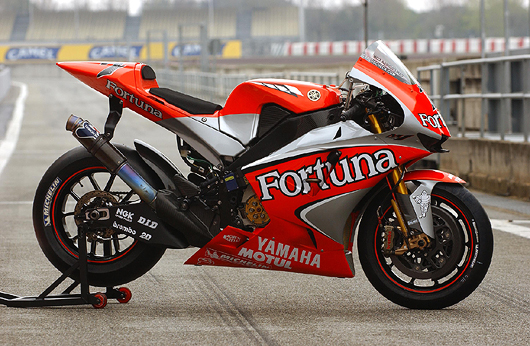
Above and below: Carlos Checa's factory Yamaha YZR-M1
sponsored by Fortuna.
As preparations
were being made for the 2004 pre-season headlines around the glob were
plastered with the announcement of Valentino Rossi joining Yamaha for
its assault on the 2004 MotoGP title. For Yamaha it's the icing on the
cake and by the time the multiple world champion first sampled the M1
there was plenty to satisfy his pallet. "We had prepared different
specification engines and chassis and many smaller items," explains
Furusawa. "We started with four types of engines and four types
of chassis to try. I had already decided for myself which combination
I thought would be the best choice for our new bike, but I kept this
to myself and waited to see what Valentino's thoughts were. I'm very
happy to say that we think alike."
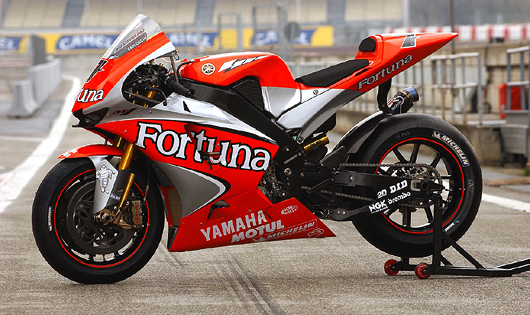
As a result the
YZR-M1 will continue with its in-line four-cylinder engine layout, but
with a revised firing order to improve predictability and drivability.
In addition to increasing rider confidence the more linear power delivery
will prove to be most beneficial during the latter stages of the race
when tyre wear often come into play. With 240-plus horsepower control
and confidence are very influential.
"Taking all
this into consideration I still feel that the inline-four engine configuration
offers the biggest advantages… it just needed a little fine-tuning,"
continues Furusawa. "This engine layout is by far the most compact,
from front to rear, allowing us to concentrate the bike's mass where
we need it. The inline-four also has less moving parts - a V-four for
example has more camshafts than an inline-four - and as a result less
friction. And with the forward biased cylinders the dynamic weight distribution
can help improve front-end traction.
"It was clear,
however, we needed to improve the way the power was delivered, and how
that was transmitted through the rear tyre," continues Furusawa.
"And I'm confident this latest generation of the inline-four has
done just that."
Yamaha's simple yet innovative adjustable engine braking system remains
for 2004. To ensure stability during heavy braking Yamaha experimented
with a number of concepts before settling on a simple yet effective
engine braking system for the YZR-M1, known as an Idle Control System
(ICS). Basically the system works in conjunction with the throttle twist
grip, which controls the opening of the four throttle bodies. Two of
these throttle bodies, however, are influenced by the ICS which adjusts
the throttle opening based on the input of the M1's ECU during deceleration.
The input of the ICS can be adjusted to suit the rider's preference.
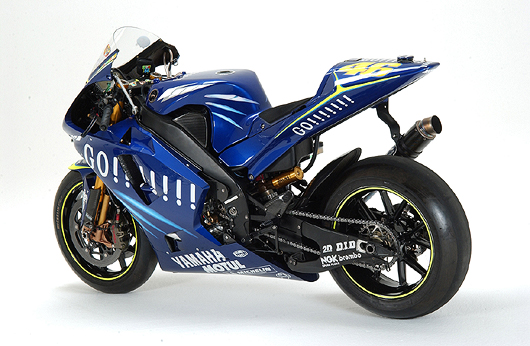
In addition to
the refined engine performance Yamaha also considered where the Deltabox
chassis could be improved. Although the M1 was by far the lightest in
handling and the most nimble in character it was gaining a reputation
as being rather flighty in nature. This became evident at bumpy circuits,
which could easily unsettle the M1. To improve the bike in this area
chassis flex was put under the microscope with the following outcome.
The first of the
2004 prototype chassis', which included a new inverted rear swingarm,
was sampled by Checa at the Valencia MotoGP late last year. Although
the torsion rigidity remained pretty much unchanged from the unit before
it the lateral rigidity was reduced significantly to improve rider feedback
at high lean angles. In addition this has also made the bike more forgiving
over less than ideal terrain, making the M1 more versatile. While the
inverted rear swingarm, also boasting more lateral flexibility, offers
a lower centre of gravity. This in turn makes the bike easier to change
direction on.
Furusawa goes on
to say: "My main concern during the final stages of last year and
during pre-season has been to improve the way the M1 powers off the
turns. My aim was to find a base chassis and engine package that would
be predictable at every circuit, not just a select few. A foundation
that would work even if the rider was unable to find the ideal chassis
set-up in the time allowed during a race weekend. I'm pleased to see
that Rossi's approach is the same."
| That
straighter load path makes the Deltabox V frame massively strong,
even as it makes the bike narrow to better fit the rider. Together
with its light, strong and long Controlled Fill die cast truss
swingarm, all that power is deployed to the pavement with the
help of a fully adjustable piggyback shock absorber.
YZR-M1
- Click any picture for a larger image
|
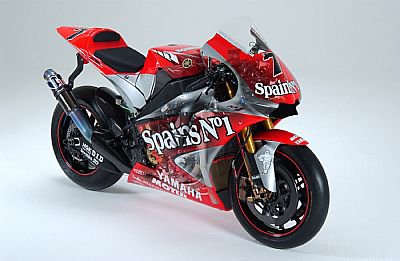 |
|
